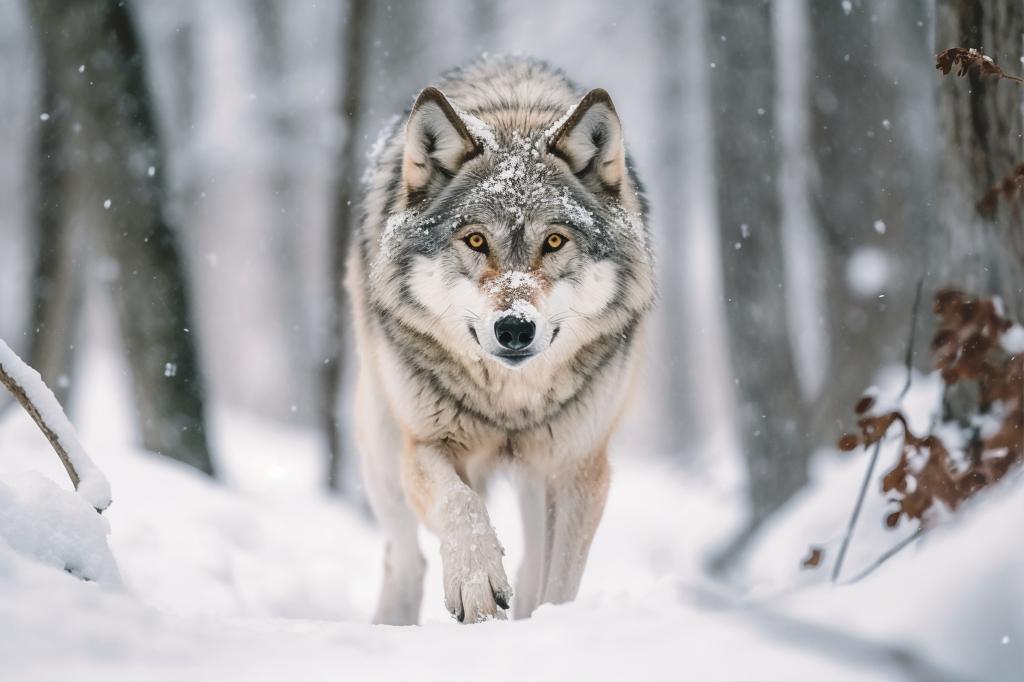
Coyotes in Alaska : "Adaptable Predators of the Last Frontier"
Introduction :
Alaska is home to a diverse array of wildlife, including an intriguing predator that has made its way into the state's wilderness—the coyote. In this educational article, we will explore the presence of coyotes in Alaska, their unique adaptations, behavior, and their interactions with the ecosystem. Let's dive into the fascinating world of these adaptable predators in the Last Frontier.
Arrival and Adaptation :
Historically absent from Alaska, coyotes have gradually expanded their range into the state over the past century. Factors such as natural range expansion and human activities have contributed to their arrival. Coyotes have shown remarkable adaptability, enabling them to thrive in various habitats, including urban areas, agricultural lands, and remote wilderness. Their ability to adapt to different environments is a testament to their resilience as a species.
Habitat and Range :
Coyotes in Alaska can be found in diverse habitats, ranging from the temperate rainforests of the Southeast to the Arctic tundra in the far north. They have established a presence throughout much of the state, displaying their adaptability to different landscapes. Coyotes have even successfully colonized urban areas, highlighting their ability to coexist with human-modified environments.
Physical Characteristics :
Coyotes in Alaska share similar physical characteristics with their counterparts in other regions. They are medium-sized canids, weighing between 9 to 20 kilograms (20 to 44 pounds) and measuring around 1 to 1.3 meters (3 to 4 feet) in length. Their fur coloration can vary, providing effective camouflage in their surroundings. Coyotes possess keen senses, including excellent vision and hearing, which aid them in hunting and avoiding potential threats.
Diet and Hunting Behavior :
Coyotes are opportunistic omnivores, meaning they have a flexible diet. In Alaska, they consume various prey, including small mammals like voles, rabbits, and squirrels, as well as birds, fish, carrion, and plant matter. Their hunting behavior is characterized by patience, stealth, and opportunism. Coyotes employ different strategies, such as stalking, pouncing, and cooperative hunting, depending on the situation and the prey they are targeting.
Ecological Interactions :
The presence of coyotes in Alaska has ecological implications. They compete with native predators, such as wolves and red foxes, for resources and territories. Additionally, their predation on smaller prey species can influence population dynamics, potentially affecting the abundance of those species. Coyotes also play a vital role as scavengers, helping to maintain the balance of the ecosystem by consuming carrion and recycling nutrients.
Human-Coyote Interactions :
While coyotes generally avoid direct interactions with humans, conflicts can arise when coyotes become habituated to human food sources or perceive a threat to their young. It is crucial for residents and visitors to Alaska to understand and respect the natural behaviors and boundaries of these wild animals. Coexistence between humans and wildlife is essential for the well-being of both.
Conclusion :
Coyotes in Alaska are fascinating creatures that have successfully adapted to the state's diverse habitats. Their ability to thrive in different environments, their resourcefulness as hunters, and their ecological role make them a valuable part of Alaska's wildlife. By learning about coyotes and promoting coexistence, we can appreciate their adaptability and contribute to the preservation of Alaska's natural heritage.
Additionally, their predation on smaller prey species can influence population dynamics, potentially affecting the abundance of those species. Coyotes also play a vital role as scavengers, helping to maintain the balance of the ecosystem by consuming carrion and recycling nutrients.



